Watch Data
Silver Watch no. 624
Case:
Dial:
Movement:
Provenance:
18?? - Potter, Geneve
1??? - E. Frölich, Berlin
2015 - Cortrie auction, 16 May 2015, "An important precision half hunting case pocket watch with pivoted detent chronometer escapement by Albert Potter for the German market Case: silver, engine-turned, signed dome with additional inscription "E. Frölich, Berlin", gold crown, hinge and shackle. Dial: enamel, radial Roman hours, auxiliary seconds, blued spade hands. Movm.: specially designed bridge movement, frosted, gilt, Potters patented barrel, "Escapement Pat. Oct. 11.75", "Plate desn Pat. Jan. 4.76.", screwed gold chatons, gold screw compensation balance, freesprung helical Palladium balance spring, polished steel escape wheel. This watch employs three of Potter's patents, the details of which are engraved on the bridges. The plate design was patented on January 4, 1876, the escapement and presumably the great wheel design, onOctober 11, 1875. Albert Potter's work is not only rare, but also always of top quality and completely original design. Emil Adolf Oskar Frölich (* November 23, 1843 in Bern; ? July 6, 1909 in Berlin) Frölich studied physics, maths and chemistry in Bern and Königsberg/Prussia; he did his doctorate (doctor philosophiae) with Franz Neumann in 1868 on the influence of the absorption of solar heat in the atmosphere on the temperature of the earth. Afterwards he became director of the Swiss boards of weights and measures in Bern and was in 1869 appointed as chair administrator for physics and meteorology at the "Land- und Forstwirtschaftliche Akademie Hohenheim" near Stuttgart. >From 1873 until 1902 Frölich worked for Siemens & Halske in Berlin (director of the physio-chemical laboratories). From 1902 on he was an associated professor at the Technical University of Berlin. Frölich wasactive in nearly all fields of contemporary electrical engineering including telegraphy, metrology, cable technology, electric generators, electrochemistry and electric furnaces. He worked on a plotting maching for recording telegraphic characters, a torsion galvanometer and a spark chronometer for measuring the speed of projectiles. Frölich also researched the calibration of standard resistors, the determination of arc temperature and, in continuation of his doctorate, the measuring of celestial and solar heat; he identified a value for the temperature of space and observed interrelationships between solar heat fluctuations and the existence of sunspots. Frölich also accomplished a very early oscillographic type recording of a curve by means of a telephone. Source: http://www.deutsche-biographie.de/pnd117538531.html, as of 03/22/2015. Cond.: Case: very good. Dial: very good, hairline. Movm.: very good, capable of running." |
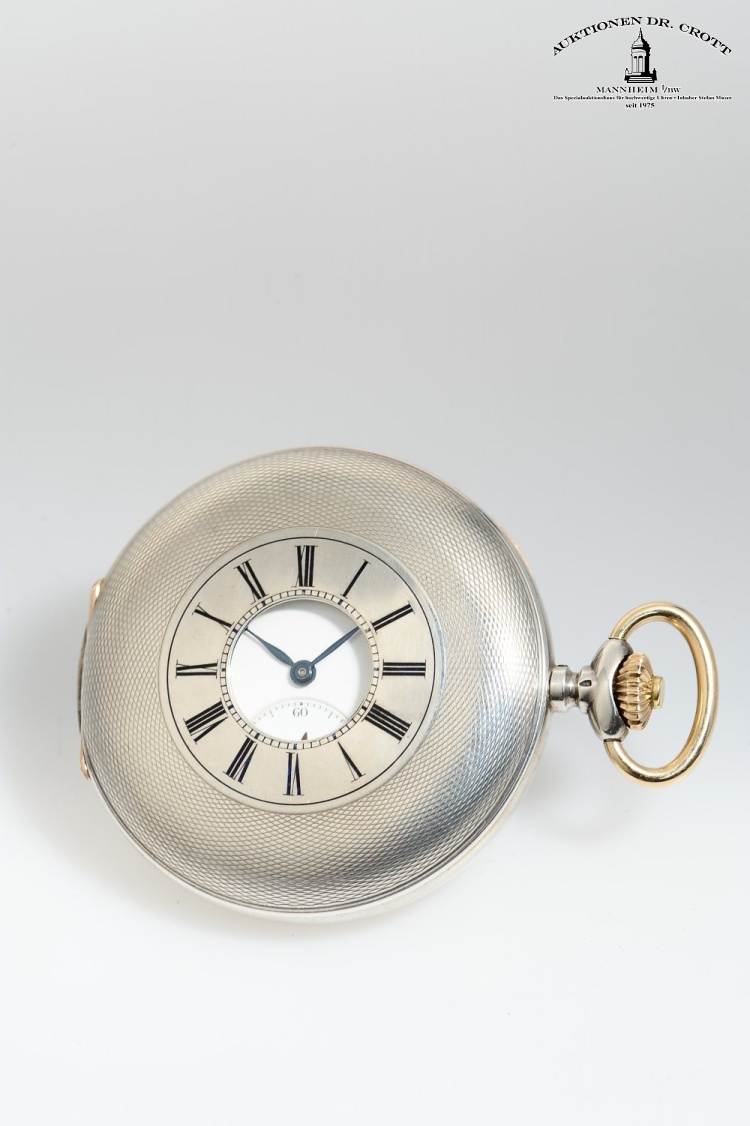

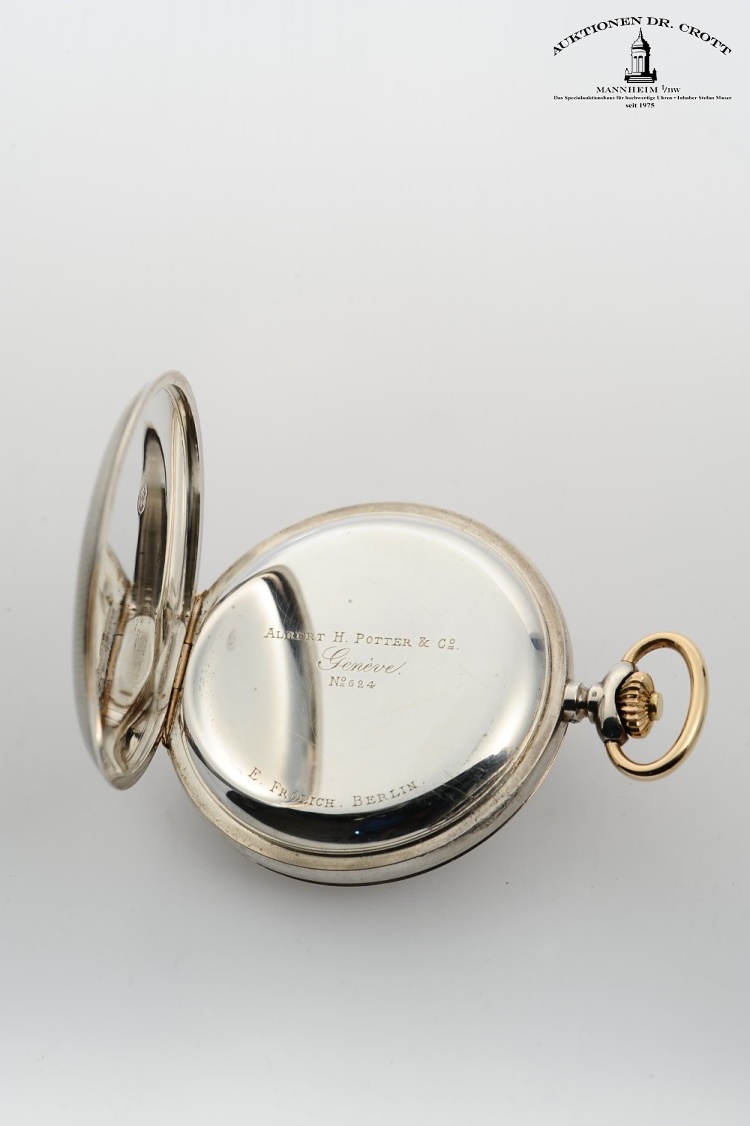
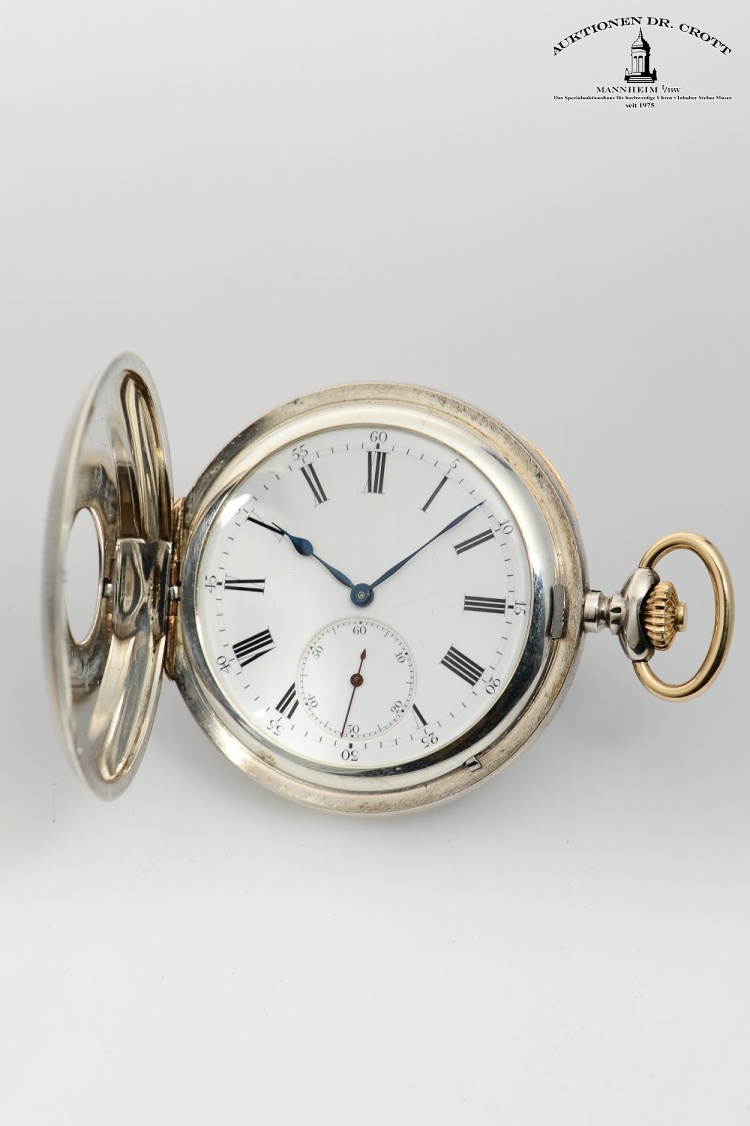
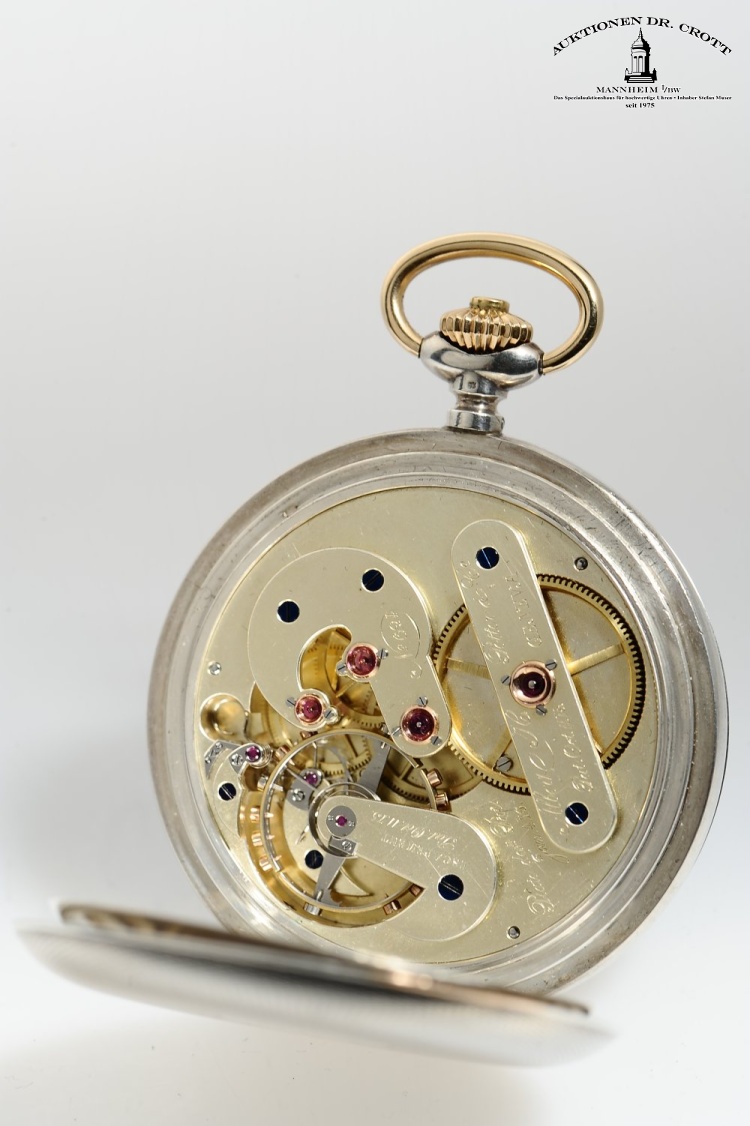
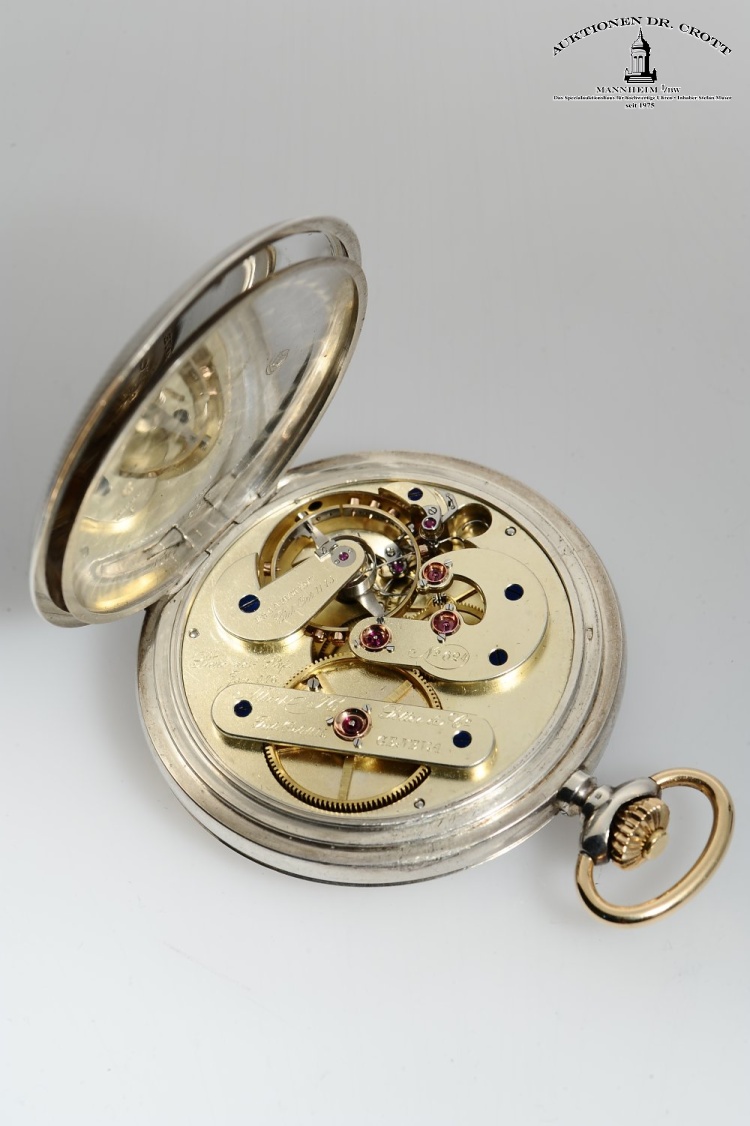
|
|

